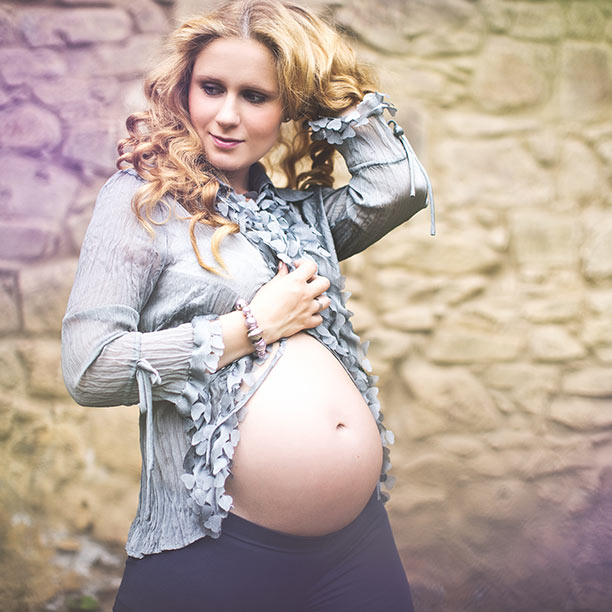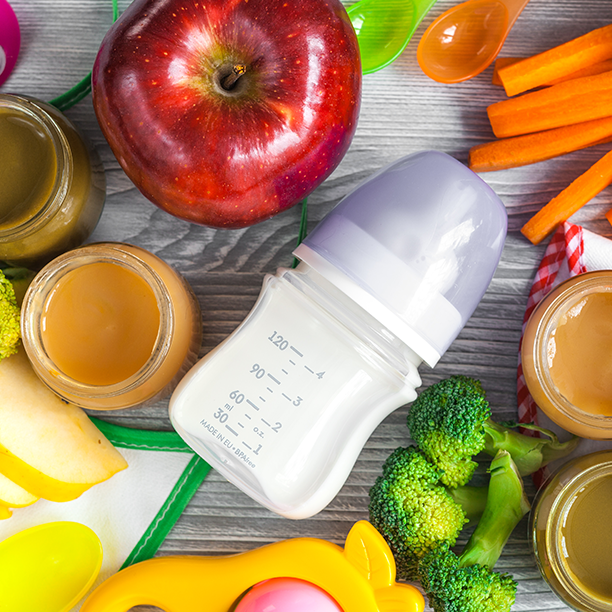Pregnancy Superstitions
Who doesn’t love an old wives’ tale? Alright, maybe they’re not for everyone, but expectant mommies are often curious about clues that might give them some insight on what gender their baby will be, whether they’ll be bald for months or born with golden locks, or when they’ll deliver. A lot of people believe these alleged myths are nothing more than that, but a few of them actually have solid roots in science.
Gender Prediction
This is probably the largest genre of old wives’ tales regarding pregnancy. There are many theories out there. Some are fun, some are weird, and some make no sense at all.
Baking Soda
The baking soda test has been around for a long time. Get ready: Believers of this gender analysis insist that mixing the pregnant mother’s urine with a couple tablespoons of baking soda will produce a fizzy result if they’re pregnant with a boy and will remain relatively settled without fizzing if it’s a girl. Unfortunately for parents everywhere who are hoping to know the gender the same day they find out they’re pregnant, this claim is entirely false. If your urine fizzes, it simply means it’s more acidic.
Urine Color
If that wasn’t enough urine talk for you, stay tuned. Another old wives’ tale boasts that women with a brighter hue to their urine are carrying a boy while those with dull yellow colored urine are having girls. This too is entirely false. Urine color has nothing to do with baby gender and everything to do with how well-hydrated you are. If your urine is very yellow, drink more water.
The Ring Test
The ring test is a pretty popular one that many couples try out. It involves tying a string around a ring, like your wedding band. Then you hold it atop the woman’s belly and wait to observe the swinging motion. A pendulum-like back and forth motion points to a boy while a circular motion points to a girl. Didn’t get the gender you were hoping for with this one? No worries. There’s nothing accurate about it. It has been theorized that in some cases the swinging motion may be influenced by the person holding it — even subconsciously — to veer toward the gender they’re most hopeful for.
Acne, Ugh!
Some time ago, some random person decided they thought little girls stole their mother’s beauty while they were pregnant. This idea started to get passed around as fact when it certainly couldn’t have been anything more than opinion. What is fact is that some women will have acne while pregnant. In fact, some might have it all over the place and feel like they’ve suddenly re-entering their teenaged years. It doesn’t mean there’s a little girl on the way. It does mean those women are more sensitive to the changes in androgynous hormone production going on in their body. That’s all it means.
Morning Sickness
Morning, afternoon, and all evening long sickness plagues many women when pregnant. Many of them are told all that time spent praying to the porcelain God will be worth it when their little girl arrives. Those who are fortunate enough to get through pregnancy without any bouts of sickness are told to be thankful for the little boy on the way. It’s safe to say this theory is also nothing more than a myth. The hundreds of thousands of women who have suffered from morning sickness with their sons and those who’ve never encountered it with their daughters can attest to it. Morning sickness is caused by hormones and digestive patterns. It can vary from woman to woman and even pregnancy to pregnancy in the same women, regardless of gender.
Order of Birth
If you’ve been hoping to find a superstition that actually has some clout, this would be it. One study on this actually showed that there is a 50 percent chance of having a girl after having had one boy while there is a 54.5 percent chance of having a boy after having had one girl. Interestingly, after having two boys, the chance of having a girl is 47.7 percent while after having two girls, the chance of having a boy is 46 percent. After three boys, there’s a 43.6 percent chance of having a girl. After three girls, the chance of having a boy jumps to 52.7 percent. When looking at birth order specifically, there is a 51 percent chance of having a boy first, a 52.2 percent chance of having one as a second child, a 48.6 percent chance in third place, and back to 50.8 percent in third place.
How Mom is Carrying Baby
Are you carrying high or low? Not sure? If the most prominent protrusion on your belly is up high — perhaps even right under your bra line — you’re carrying high. According to all the old wives who shall remain unnamed, this means it’s safe to decorate the nursery in your favorite shade of pink. Common sense would tell you to hold that thought until a stronger set of criteria affirms the gender. Carrying low on the other hand obviously is said to mean it’s a boy. It might be fun to guess, but I wouldn’t decide on paint colors just yet.
Drano?
Mixing about two tablespoons or crystal Drano with the pregnant Mommy’s urine is said to produce a reaction that is telling of the baby’s gender. After mixing, stand back (there are fumes) and observe the color changing process. If the mixture adjusts to a dark brown hue, the myth claims you’re having a boy. No change equals a girl. Of course, there is zero science behind this claim, too, so a lot of people don’t even bother with this test. Normally I’d advocate for abstaining from chemical cleaners like this while regnant anyway.
Cravings
Longing for a second serving of meat and potatoes? Congrats! It’s a boy! Or so they say. Salty and spicy foods are also said to be in favor of a developing male, while chocolate and other sweets point toward little girls. It sounds idyllic that girls would crave spice and boys would want a hearty dish of protein, but there is absolutely no evidence that either is true.
Skull Theory
The skull theory makes use of early ultrasounds. It is said that a squarer jaw with a larger or broad forehead is likely to be a boy while a rounded forehead shape is more likely to be a girl. The jury is still out on whether this theory has any kind of foundation in science. A lot of online-based Mom’s groups are found of the test and compare ultrasound image with one another often in hopes that enough guesses will convince them the predicted gender is correct. Some doctors argue it could be plausible. Of course, some scientists argue early formation of the skull and other facial bones have little to do with gender and can still change long before birth. For now, it remains a superstition, not science.
Nub Theory
Have you heard of the angle of the dangle yet? If not, climb aboard. This theory actually has some strong roots to it. It claims the tubercle (not yet fully formed genitalia) of the baby around the 12th week of gestation can be telling of gender depending upon the degree of the angle it creates in relation to the spine. A female tubercle will be more parallel to the spine while a male tubercle will point upward more. Without a good sagittal plane image of the baby lying flat with a non-curved spine, this theory can be hard to put into place. It also must be assessed between 12 and 14 weeks for optimal accuracy, but it’s safe to say it’s totally legit and reliable.
The Key Test
This one isn’t quite as common and may not have existed as long as some of the others discussed here, but the key test holds that the manner in which a pregnant woman picks up a single key could determine the sex of her unborn baby. Picking it up by the narrow, cut end signals a girl on the way and grabbing it by the round, handle part is indicative of a boy. Of course, the test is said to work best on a woman who doesn’t know she’s being tested. Nonetheless, it’s hardly an accurate test of gender.
Mother’s Intuition
Short and sweet: a study on mother’s intuition found that 70 percent of women who had a feeling they knew the gender of their unborn child turned out to be right about it. Going with your gut may not be a bad idea.
Psychic Pigment?
Before you go a step too far and start telling everyone you’re having a boy because the areola around your nipples has darkened, take a little time to read up on what actually causes that process. It is entirely hormonal. Just like you may develop a darkened streak down your abdomen — known as the linea nigra — and brown spots on your face or body called melasma, all of these skin conditions occur as a result of progesterone and estrogen colliding with melanin. The chemical response is changes in pigmentation in the skin. The darkened areola actually has a very distinct purpose. It makes the nipple more visible to the breastfeeding baby whose vision isn’t perfect at birth. In other words, this has nothing to do with the baby’s gender.
Boys Bring More Hair?
As much as androgens like testosterone produce more sebum that causes excess acne during pregnancy, they also increase hair grow. Rising estrogen adds to the mix by deterring hair shedding. The end result is hair that seems to be or really has become thicker. It has nothing to do with boy babies. The same testosterone and estrogen are produced by women pregnant with girls. Some of these women will grow more hair and some won’t. It all depends how the individual woman responds to the hormonal chances her body is making.
Heart rate
You might’ve heard that the baby’s heartrate is a determinant of gender. It has been said that a fetal heart rate above 140 produces a boy while female fetal heart rates tend to remain below such. There’s no clear cut rule on when this should be tested for and that complicates things, because the fetal heart rate can vary widely from the beginning of a pregnancy till the end. While thought to be true for a while based on certain studies, larger ones have come to light in recent years that prove, for sure, the heart rate theory is also incorrect.
Not only are there multitudes of superstitions involved in guessing the baby’s gender after conception, there is also folk wisdom regarding the pre-conception phase, too. Theories even exist regarding the timing of conception and eating a diet of specific foods thought to adjust the pH of the body and make it more likely a certain gender is conceived. Short of a blood or saliva sample to test for fetal DNA that notes the gender, parents will have to wait for an anatomy scan or birth before deciding on nursery schemes and layettes.
Heartburn and Hair
So you’re feeling around 60 weeks pregnant and the heartburn is never-ending. It may have just started yesterday, but dealing with constant acid indigestion is no fun, especially not when you’re someone who wants to eat all day long. The silver lining that makes it bearable is that your baby will be born with lustrous locks of hair en masse, right? Actually, this one has some credibility. Johns Hopkins did a study on this myth and found that the results agreed with it. Among 28 women who reported having moderate to severe heartburn, 23 gave birth to babies with average or above average amounts of hair. In contrast, 10 of the 12 mommies who had no heartburn had fairly bald babies.
The good news is there is relief. While over the counter antacids are generally considered safe, they can contribute to early calcification of the placenta even when used sparingly. That means the placenta stops working effectively and baby has to be delivered early. A safer option is a dose of apple cider vinegar. A shot works, but if you have to mix it into a glass of water, that’s okay, too. It sounds like this would burn, right? Nope. Indigestion and heartburn are commonly misunderstood. Their root cause is too little stomach acid, not too much. Adding more acid is the solution. Papaya enzymes taken with every meal can also aid in pushing digestion along — which is slowed down due to all the progesterone your body is producing. No word on whether killing the heartburn will slow hair growth, but it’s unlikely.
What You Eat Now Matters
Well, we know how important folate and a balanced diet are for optimal nutrition and we know that there is no time it’s more important than when we are growing another person. What you may not know is that your diet while pregnant can impact how well your baby eats after they’re born. For years it was thought this was the most ridiculous of all folk wisdom, but as it turns out, there is actual research out there showing babies begin to swallow amniotic fluid in the second trimester and they develop a palette for the foods mom is ingesting. If the mom-to-be is eating lots of carrots and broccoli, their bundle of joy is more likely to be accepting of those flavors later on.
Ginger for Morning Sickness
So, do all those home remedies for morning sickness really work? Is ginger the cure all for queasy pregnant mommas? The research reports an astounding no and one study found that while it was helpful to some women, how much it helped wasn’t great and it really lacked consistency.
Unbelievable Umbilical Cords
Have you been scared to death yet by well-meaning family members that insist you don’t list anything over the height of your head? Whatever you do, don’t reach your arms up into the air. It’ll cause the umbilical cord will stretch out and as it falls back down, it will wrap itself around the baby’s neck and strangle him or her. Thank goodness this is nothing more than a poorly thought out myth. The umbilical cord is nearly two feet long on average. The risk of nuchal cord was found to be around 29 percent among deliveries at 42 weeks, compared to 5.8 percent among deliveries at 20 weeks. This confirms that the risk does increase with gestational age. However, nuchal cord alone is not a danger to babies. Nonetheless, none of it has anything to do with where you put your arms. Vriksasana all day if you like.
Cravings Equal Deficiency
Sort of. In general, if someone is craving a certain food or food type all the time, they may be deficient in something. For example, someone who craves chocolate might be low on magnesium. The body is an amazing thing that is hardwired to make sure it gets the nutrients it needs. However, all of that goes out the window when a woman is pregnant. Cravings during this time in her life are all about hormones and their effect on the senses. Women who are taking their whole food prenatal vitamins, complete with methylfolate and added DHA alongside a balanced diet have nothing to worry about in the deficiency department. That said, if you’re cravings things that aren’t food — like laundry detergent, clay or ice — this condition known as pica can be associated with low iron. This is a common side effect of pregnancy known as anemia and can be easily rectified with a daily dose of Floradix, which is the best absorbed form of iron next to food. It gets bonus points because it’s a liquid (you don’t need another horse pill) and it won’t cause constipation.
Miscarriage
Pregnant women have been warned continually about the risks of caffeine for years. From the development of neurobehavioral issues to miscarriage, caffeine and pregnancy don’t mix well. This one is true. While research has shown an increased risk of miscarriage in the first trimester among women who consume thee caffeinated beverages a day, there is no clear cut amount that is safe or unsafe. As such, if miscarriage is a concern for you, it might be best to give up the coffee and soda for a while. There are also some theories that cinnamon can cause miscarriage. Limited scientific evidence suggests that large amounts used medicinally can be used as a natural abortifacient. In light of this, it may be wise to go easy on the sweet spice until at least until the first trimester has passed.
Breastfeeding Offers Protection from Pregnancy
Well, if this were true, I wouldn’t have my first son. Utilizing breastfeeding as birth control is actually known as the lactation amenorrhea method. When a woman breastfeeds exclusively round the clock in the absence of periods and her baby is younger than six months old, this method is actually 98 percent effective.
By the Light of the Moon
Labor and delivery nurses everywhere might have you believing that full moons trigger labor to occur en masse. While the moon cycle is historically tied to women’s menstrual cycles, it does not influence birth. That being said, changes in barometric pressure can bring on labor in expectant mothers. So if a storm is on the horizon, it might be worth crossing your fingers.
Inducing Labor Naturally
If you’re not in the mood to wait for the next thunderstorm, there are other potential suggestions and the old wives weren’t off base on all of them. The theory behind spicy food is that it gets the bowel moving. Contractions in the intestines cause prostaglandins to be released which soften the cervix. It also lies against the uterus and can stimulate contractions within it, too. This is the same way castor oil works. When used as directed, it should not cause uncomfortable side effects in most women and can induce labor in a safe manner. Many women complain that is causes bowel movements. Used as directed, it shouldn’t cause more than one or two, but the bowel movement is actually the whole point of it. If your bowels don’t contract, it will do nothing for labor.
Red raspberry leaf tea is often recommended for overdue moms who are ready to give birth. This tea is known to help tone the uterus to make labor a more productive process. Over the years, it somehow got the reputation that it helps to induce labor, too. That part isn’t true. If you’re in the mood for food, some say that eating eggplant can get things going. The idea is that chemical compounds in the skin of the eggplant aid in the induction process. However, there is no evidence that this is true at all.
Some people will tell you eating pineapple can induce labor. There was a study done on this and it required eating 7 to 10 pineapples, minimum. Almost anyone would have significant bowel contractions after this. I imagine eating that much fruit of any kind could theoretically have the same effect. Semen is also known to have prostaglandins in it that can help soften to the cervix, and orgasm releases oxytocin which can stimulate contractions. So if someone is urging you to have sex to get things rolling for delivery, they are relying on science, not superstition. Nipple stimulation also releases oxytocin and can help bring on f regulate existing contractions.
Truth be told, it seems unlikely that any effort to stimulate labor contractions will be effective until a woman’s body and the baby are both ready for birth. Once a baby’s lungs are fully mature, they release copious amounts of a substance called surfactant. This triggers the release of oxytocin in the mother which stimulates labor all on its own. Until then, trying out all the ole wives’ tales might help to pass the time and make moms-to-be feel like they’re doing all they can to help things along. For anyone who hasn’t been 40 weeks pregnant and counting before, it’s usually a necessary step on the road to having a baby.
There’s certainly no harm in trying out any of the superstitious bits above and seeing what kind of result you get. But keep in mind that even if a myth ends up being accurate for you, it still doesn’t mean it wasn’t any more than a guess you lucked out on. Obviously, induction methods should never be attempted without your doctor’s or midwife’s approval. Of course, at the end of the day, even most old wives’ tale that appears to be true had a 50/50 chance of ending up that way. We can chalk it up to a wise guess and good clean fun.










